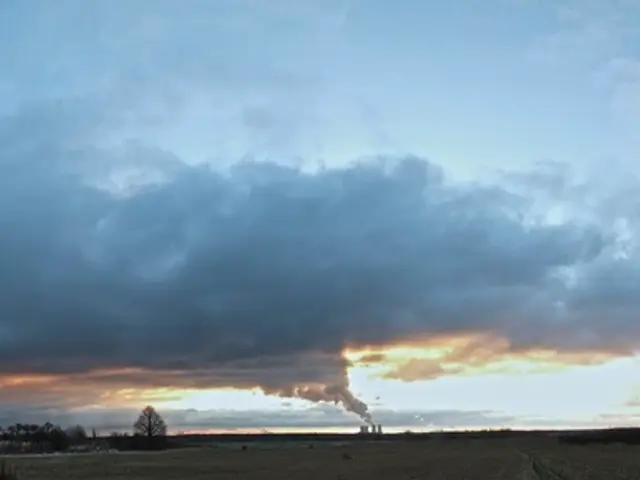Cosmic findings showcase dormant galaxies, known as 'Sleeping Beauty', existing beyond their expected locations in the early universe, as unveiled by the James Webb Space Telescope.
**New Discoveries of Dormant Galaxies in the Early Universe**
A team of international astronomers has made a significant breakthrough in understanding the early universe, thanks to the James Webb Space Telescope (JWST). The discovery of 14 dormant galaxies, which existed within the first billion years after the Big Bang, provides new insights into the phenomenon of star formation quenching.
The JWST's NIRSpec instrument has the capability to see light from these dormant galaxies that has been redshifted to near-infrared wavelengths and provide spectroscopic details about them. This groundbreaking technology has allowed astronomers to study these galaxies in unprecedented detail.
The dormant galaxies, often referred to as "Sleeping Beauty" galaxies, paused their star formation much earlier than anticipated. The findings suggest that these galaxies may undergo transient dormancy, potentially resuming star formation when conditions become favorable.
The discoveries challenge traditional views on galaxy evolution, suggesting that the cessation of star formation is not a permanent state but rather part of a larger dynamic process. The implications of these findings are significant, as they could fundamentally alter our understanding of galaxy formation dynamics and the role of these dormant phases in the early universe.
The dormant phase in galaxies is usually a temporary phase, lasting about 25 million years. Over millions of years, the gas that was pushed out falls back in, and the warm gas cools again, allowing the galaxy to start forming new stars. The 14 galaxies discovered by the team, ranging from about 40 million to 30 billion solar masses, had paused star formation.
Using JWST's sensitive spectroscopic data, the team has shown that dormant galaxies are not limited to low or very high mass ranges. The limited observations and scattered properties of dormant galaxies were not sufficient to get a clear picture of early star formation. However, the new discoveries have filled this gap, providing a more comprehensive understanding of early star formation in the universe.
The team, led by Paz, looked for galaxies that were in between bursts of star formation using publicly available galaxy data in the DAWN JWST Archive. An upcoming JWST program called "Sleeping Beauties" will be dedicated to discovering dormant galaxies in the early universe, allowing astronomers to estimate how long a galaxy remains in this quiet phase and help them understand the bursty star formation process.
The relatively short snooze of these galaxies suggests that stellar feedback, such as supernovas or stellar winds, caused them to go quiet and that they may eventually restart their stellar factories. Another reason galaxies become inactive is stellar feedback, which occurs when gas in the galaxy gets warmed and expelled due to stellar processes like supernovas, intense stellar winds, or the pressure associated with starlight.
Larger neighboring galaxies can also strip away cold gas or heat it, leading to a halt in star formation. Dormant galaxies may become inactive due to the presence of supermassive black holes at their centers, which emit intense radiation that heats and depletes cold gas needed for star formation.
The findings from JWST highlight the burstiness of star formation, where galaxies experience brief periods of intense star-forming activity followed by extended periods of quiescence. This burstiness is part of a cyclical pattern, where galaxies pause and then resume star formation depending on various internal and external factors.
The discovery of these 14 dormant galaxies in the early universe provides a significant step forward in understanding the early universe and the processes that govern galaxy formation and evolution. The upcoming JWST program "Sleeping Beauties" will continue to shed light on this fascinating topic, offering astronomers a chance to delve deeper into the mysteries of dormant galaxies and their role in the universe's history.
Thebreakthrough in the early universe, facilitated by the JWST, has expanded the understanding of not just star formation quenching but also the health-and-wellness of star formation within galaxies. This is because the dormant galaxies discovered, through their unpredictable pause and resume cycle, suggest a new perspective on the environmental-science within galaxies.
The JWST's discovery of dormant galaxies in the early universe has also opened up a new avenue of study in space-and-astronomy and fitness-and-exercise of galaxies, as the cyclical nature of star formation offers insights into the resilience and adaptability of these celestial bodies.




